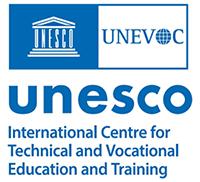
The UNESCO-UNEVOC International Centre: Who We Are | What We Do | Working With Us | Get in Touch
The UNEVOC Network: Learn About the Network | UNEVOC Network Directory
For Members: UNEVOC Centre Dashboard
Thematic Areas: Inclusion and Youth | Digital Transformation | Private Sector Engagement | SDGs and Greening TVET
Our Key Programmes & Projects: BILT: Bridging Innovation and Learning in TVET | Building TVET resilience | TVET Leadership Programme | WYSD: World Youth Skills Day
Past Activities: COVID-19 response | i-hubs project | TVET Global Forums | Virtual Conferences | YEM Knowledge Portal
Our Services & Resources: Publications | TVET Forum | TVET Country Profiles | TVETipedia Glossary | Innovative and Promising Practices | Toolkits for TVET Providers | Entrepreneurial Learning Guide
Events: Major TVET Events | UNEVOC Network News
The National Higher Engineering School of Tunis (ENSIT) contributes to Tunis University’s future through its own vision and mission.
Our name change in 2011 from "ESSTT" to "ENSIT" is the result of the renewal and growth engineering and applied sciences at our school. The main focus of ENSIT is to be a world-class engineering school recognized for excellence, innovation, and the societal relevance and impact of its pursuits.
Established in 1973, the ENSIT was known as ENSET which was an accredited higher education institution that formed professors in electrical engineering and industrial science. In 1994, educational reforms mandated the transformation of the ENSET to ESSTT and later in 2003 the ESSTT was subscribed to the LMD reforms.
Today, we have an opportunity to educate future engineers who will connect ideas in unexpected ways, integrate technological innovations into daily life. Our mission is to produce creative and technically strong engineers in the fields of civil, mechanical, electrical, industrial engineering and applied mathematics.
The School provides a research environment with active research groups, and a wide variety of research topics. Our research covers a broad range of subjects, as well as the interfaces with computer science, information and communication technologies, electrical and mechanical engineering, chemistry and physics.
Our Engineering School is opened on the industrial environment in the framework of a technology transfer strategy launched together with a wide network of universities and institutions from French, Germany, Italy, Spain and Canada.

.jpg)